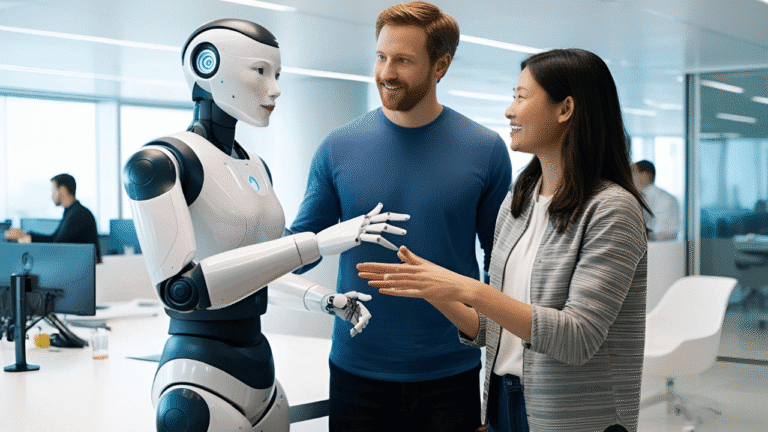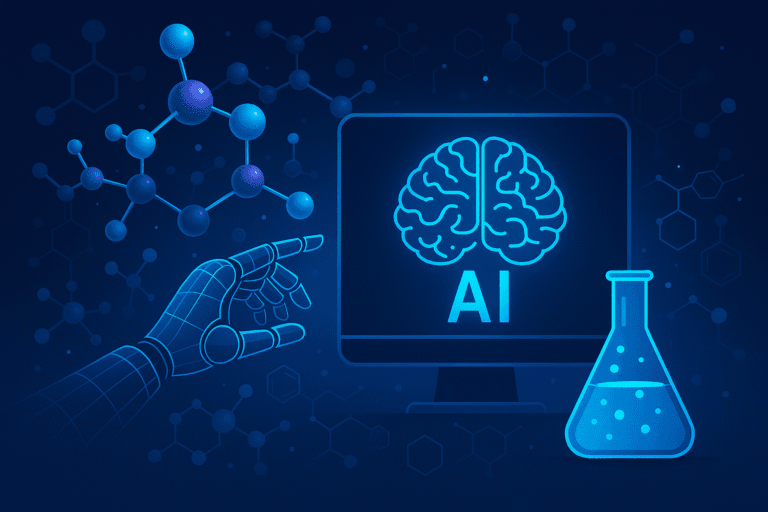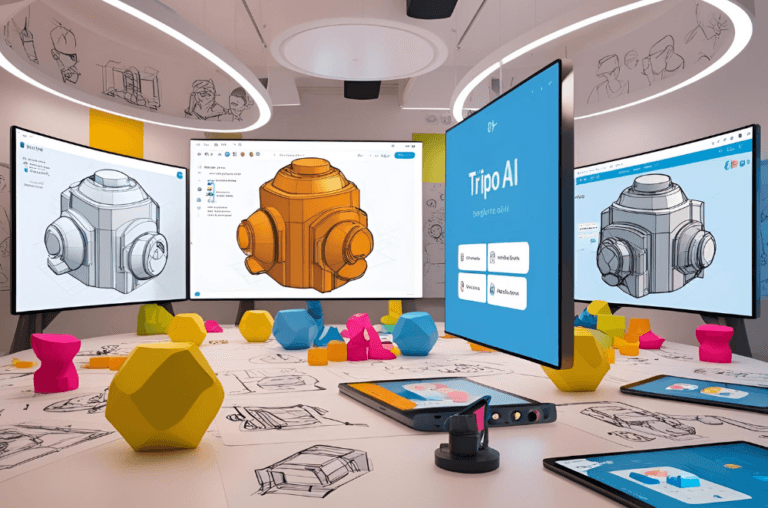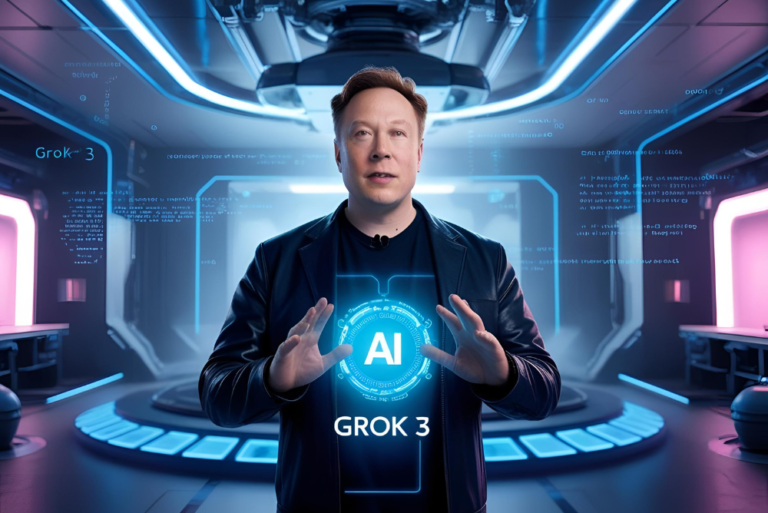Introduction: The New Frontier of Mind-Reading While You Sleep
There’s something deeply mystical about dreams. From ancient civilizations to modern psychology, humans have always been fascinated by the subconscious mind’s night-time activities. But in recent years, this age-old mystery has been infused with the power of technology. Imagine a world where AI not only interprets your dreams but reads your mind while you sleep. This idea, once confined to science fiction, is inching closer to reality.
🤖 Can Machines Really Read Our Minds in Real Time During Sleep?
This question raises more than just curiosity—it challenges our understanding of consciousness and the potential of artificial intelligence. Over the last decade, advances in neuroscience and AI have led to groundbreaking experiments that suggest AI could decode the content of our dreams, potentially translating subconscious thoughts into images, words, or even emotions.

As AI dream interpretation becomes a trending term in the scientific community and popular culture, the allure of mind-reading technology is undeniable. Could we eventually use AI to look inside our minds and uncover the mysteries that lie beneath the surface of sleep?
🌐 How AI-Powered Neuroscience Is Unlocking the Secrets of Our Dreams
This is more than just a far-fetched idea—it’s an area of active research. AI is increasingly being applied to fields like neuroscience and cognitive psychology, where machines are trained to understand brainwaves and neural patterns during sleep. The integration of machine learning and brainwave analysis could offer insights into how our dreams are formed, what they mean, and whether we can control or manipulate them. Imagine AI-powered dream journaling, where your dreams are analyzed and interpreted in real-time.
Public interest is growing as concepts like mind-reading tech and dream interpretation using AI become the focal point of both academic research and mainstream discussions. As these technologies evolve, we may not only understand our dreams but also gain insights into our subconscious that were previously inaccessible.
What Happens in the Brain When You Dream?
Before we delve into the potential of AI-driven dream interpretation, it’s essential to understand what happens in the brain during sleep. Dreaming is an incredibly complex biological process, and it begins with the brain’s various states during the sleep cycle.
🧠 Breaking Down the Science of Dream Formation
Dreams occur during specific stages of sleep, particularly during REM sleep (Rapid Eye Movement). This is when our brainwave activity is most similar to the waking state, and our minds become highly active. Interestingly, while our bodies are essentially paralyzed during this time to prevent acting out our dreams, our brains are at their most vibrant.
💤 The Sleep Cycle: From Light Sleep to Deep REM
The sleep cycle is divided into several stages:
- Light sleep (NREM stages 1 and 2): These are the initial stages of sleep where the body relaxes, and brain activity slows down. Though you may drift in and out of awareness during these stages, vivid dreams are not common.
- Deep sleep (NREM stage 3): This is the stage where the body undergoes physical repair and restoration, and brainwave activity slows significantly.
- REM sleep: This is the stage where dreaming predominantly occurs. Brainwaves are fast and irregular, much like when we’re awake. During REM sleep, the brain consolidates memories, processes emotions, and connects fragments of experiences. This phase is crucial for learning and emotional regulation.
(Cleveland Clinic- Sleep Basics )
🧠 Brainwave Activity: The Key to Dreaming
While we sleep, our brainwaves move through different frequencies, each associated with different states of consciousness. These include:
- Alpha waves: Associated with relaxed wakefulness.
- Beta waves: Occur during active thought and concentration.
- Theta waves: Theta brainwaves take center stage during light sleep and REM cycles—key phases linked to vivid dreams and deep subconscious activity.
- Delta waves: Present during deep sleep, crucial for body restoration.
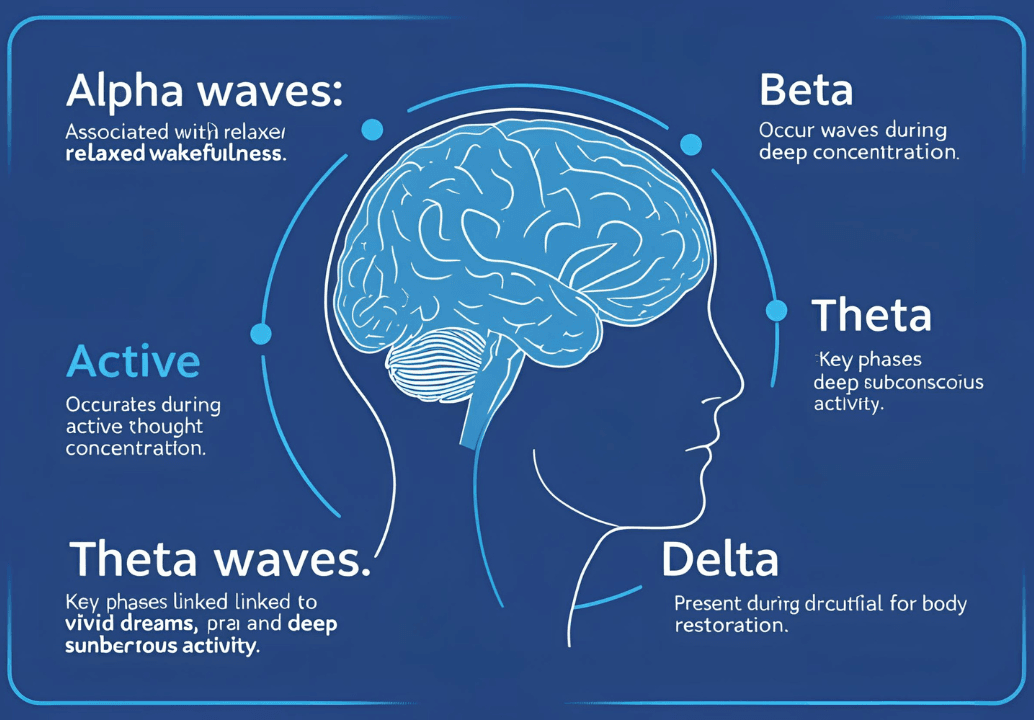
Brainwave activity during REM sleep is especially important for dream formation. During this phase, the brain is actively processing memories, emotional responses, and experiences. Some theories suggest that dreams are a byproduct of this memory consolidation process, helping the brain filter and organize the day’s events.
🌙 Memory Processing and Emotional Regulation
Dreams are thought to play an essential role in how we process our emotions and memories. The amygdala, responsible for processing emotions, is highly active during REM sleep, which may explain why many dreams are emotionally charged or anxiety-inducing. At the same time, the prefrontal cortex (responsible for logic and decision-making) is less active, which may explain why dreams can often seem nonsensical or illogical.
This emotional processing is also why dreams are so powerful: they allow us to work through unresolved feelings, fears, or desires in a non-linear manner, providing psychological insights we may not have access to during waking hours.
🔍 Decoding Dreams: A Biological and Psychological Puzzle
While scientists understand that dreams arise from complex interactions between memory, emotion, and brain activity, decoding their exact meanings and origins remains elusive. This complexity is what makes dream interpretation both biologically fascinating and challenging. Understanding the neural underpinnings of dreams is one of the many reasons why AI dream interpretation is so intriguing—by analyzing brainwave patterns, AI could potentially interpret and decode dreams, offering real-time insights into our subconscious.
This level of complexity is what fuels the growing interest in AI-driven neuroscience and mind-reading technologies. As we continue to explore how the brain works during sleep, it may not be long before machines can assist in the process of dream analysis, giving us a deeper understanding of our subconscious minds than ever before.
How Machines Are Learning to Decode Dreams
The idea of decoding dreams has captivated both scientists and technologists for decades. With the advent of sophisticated neural decoding methods, machines are beginning to translate brain activity into data that can be interpreted in visual and conceptual terms. This process is at the cutting edge of both neuroscience and artificial intelligence.
🧠 What is Neural Decoding?
Neural decoding uses advanced tools like brain imaging and machine learning to convert patterns of brain activity into meaningful, usable information. Essentially, researchers are developing tools that allow them to “read” the brain’s electrical signals and decode them into specific thoughts, emotions, and even dreams.
🌐 The Role of AI in Neural Decoding
AI plays a crucial role in this process. By training deep learning algorithms on massive datasets of brain scans, AI can identify patterns and correlate them with specific mental states. For instance, AI might analyze an individual’s fMRI brain scans (functional magnetic resonance imaging) while they dream and then correlate these patterns with previously identified images or emotional experiences. This allows AI to create a rough “sketch” of what someone might be seeing or feeling in their dreams.
🧠 How fMRI brain Scans Capture Brain Activity During Sleep
fMRI (functional Magnetic Resonance Imaging) scans are one of the most powerful tools used in dream research. fMRI measures changes in blood flow within the brain, which can indicate areas of neural activity. When combined with AI and neural decoding algorithms, these scans allow researchers to track and map brain activity during various stages of sleep, particularly REM sleep—the phase most associated with vivid dreaming.
📊 AI and fMRI: A Powerful Combination
Researchers have found that when they analyze fMRI brain scans of people who are dreaming or recalling their dreams, the machine can identify distinct neural signatures associated with certain concepts or images. This data can be analyzed by AI to recognize patterns and then match these patterns to visual or conceptual content from a database, thereby offering insight into the content of dreams.
For instance, if a subject dreams about an apple, the fMRI may show neural patterns corresponding to visual processing areas in the brain. AI can then compare this to a visual database of objects to help reconstruct a basic version of the apple.
🔍 AI Algorithms in Dream Interpretation
AI algorithms use deep learning techniques to map the complex relationship between brain activity and the images, sounds, and emotions associated with dreams. By training these algorithms on a vast array of fMRI data from various dream studies, AI can begin to create a dream dictionary, mapping specific neural patterns to certain dream elements. This process is still in its infancy, but it could one day allow for real-time dream analysis, offering personalized dream interpretations based on the individual’s neural signatures.
These systems aren’t just about mapping simple visual elements, though—they’re working toward understanding conceptual and emotional aspects of dreams, potentially identifying symbolism, themes, and psychological states that exist within dreams.
🧑🔬 Research Breakthroughs: Japan’s Contribution
Countries like Japan have been at the forefront of AI dream interpretation research. One of the most groundbreaking contributions comes from the ATR Computational Neuroscience Labs in Japan, where researchers have demonstrated remarkable progress in decoding dreams using AI and fMRI brain scans. Their efforts have opened the door to new possibilities in how we understand and interact with our subconscious minds.
Case Study: Japanese Researchers Who Reconstructed Dreams
One of the most notable milestones in AI dream decoding came in 2013, when a team of Japanese researchers achieved a significant breakthrough using AI and fMRI brain scans to reconstruct images from the minds of sleeping participants. This study, conducted at the ATR Computational Neuroscience Laboratories in Japan, is considered a landmark moment in the development of dream AI technology.
🧠 The 2013 Japanese Study: Reconstructing Simple Images from Dreams
The study involved participants who were asked to sleep while their brain activity was monitored via fMRI. The researchers used a deep learning algorithm to analyze the brain’s visual processing areas during dreaming. The key goal was to match specific neural signals with visual patterns present in the participant’s dreams.
🖼 How the Dream Reconstruction Process Worked
Here’s how the process unfolded:
- Brain scans during REM sleep: Participants were placed in the fMRI brain scanner while they slept, allowing the machine to capture the brain’s neural activity during REM sleep, the phase when dreaming occurs.
- Mapping brain activity to images: The researchers used AI to map the brain’s visual cortex activity and then cross-referenced this with a database of images. The deep learning model identified patterns in the brain data that corresponded to specific visual features (e.g., shapes, objects, and scenes).
- Dream reconstruction: Using the identified neural patterns, the researchers could recreate a rudimentary image of what the participant had seen in their dream. While the images were far from perfect, they resembled the core concepts of the dream (e.g., shapes or objects like faces or simple landscapes).
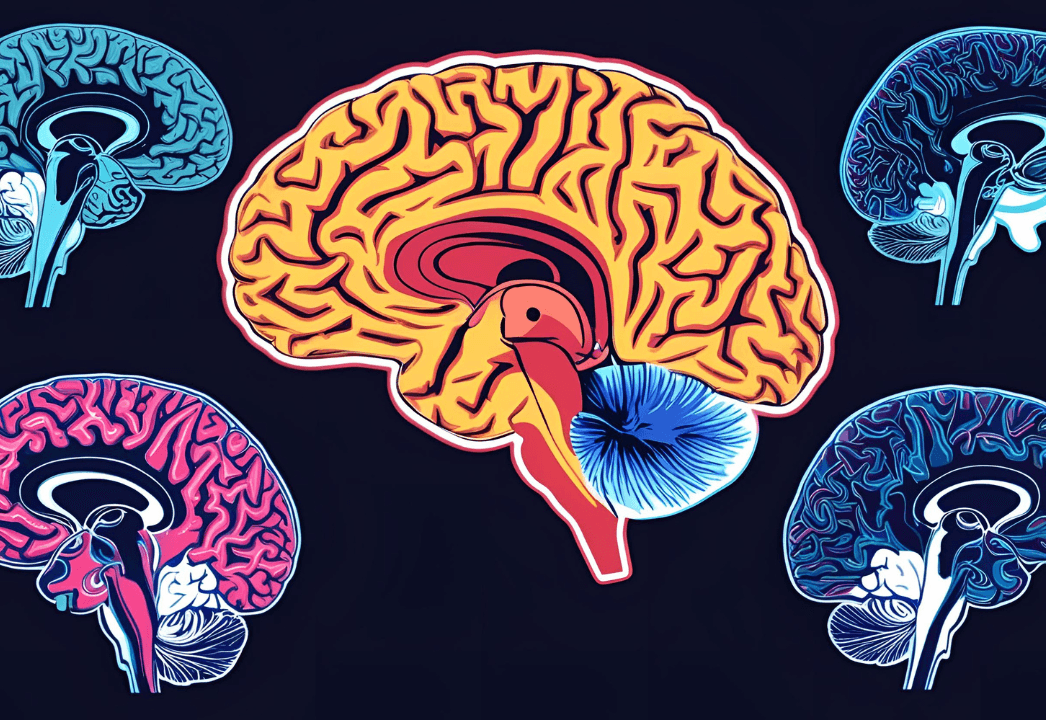
This experiment was a groundbreaking achievement, demonstrating the feasibility of using AI algorithms to decode the visual content of dreams. While the technology is still in its early stages and could not yet recreate the full complexity or nuance of dreams, it marked a critical step forward in the field of neural decoding.
🔍 Why This Study Was a Landmark
This study is considered groundbreaking for several reasons:
- AI + neuroscience fusion: It demonstrated the powerful potential of combining AI algorithms with neuroscientific techniques like fMRI.
- Real-time dream reconstruction: The study showed that it was possible to decode dreams with relatively simple visuals, opening doors to more complex dream analyses in the future.
- Exploring the subconscious: It signaled the beginning of a new era in which we may one day be able to understand and interpret our subconscious mind with the help of machines, offering valuable insights into the nature of human consciousness.
🌐 Implications for the Future of AI Dream Decoding
The breakthrough by ATR’s team helped pave the way for future studies that could result in more advanced forms of dream decoding. Researchers are now working on ways to refine this technology and create even more accurate dream reconstructions—potentially giving us the ability to interpret more complex aspects of our subconscious, including abstract thoughts, emotions, and symbolic representations.
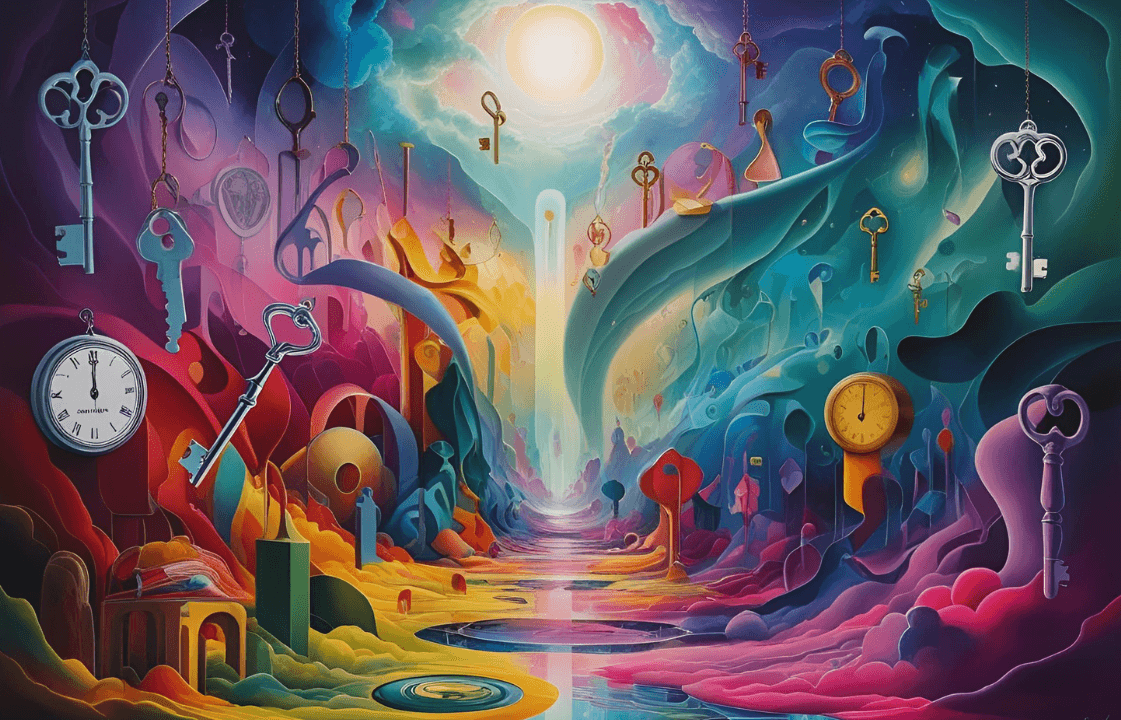
This case study not only highlights the technical challenges of decoding dreams but also sparks ethical discussions about the potential privacy concerns and implications of being able to “see” inside someone’s subconscious. The possibilities are vast, but they come with important questions about consent, mental health, and the future role of AI in personal spaces like dreams.
The Science of AI + Brainwaves: How Accurate Is It?
As the technology for decoding dreams and brain activity progresses, one major question arises: How accurate is AI at reading brainwaves? While there’s no denying the potential of AI and brain science in decoding human thoughts and dreams, the accuracy of these systems remains a significant challenge. In this section, we’ll explore how deep learning models are trained to interpret brain data, the current capabilities of AI neural networks, and the limitations of existing technology.
🧠 Deep Learning Models and Neural Datasets
AI’s ability to decode brain activity hinges on deep learning algorithms. These algorithms are trained using large-scale neural datasets, which involve fMRI scans of brain activity captured during various cognitive states. The machine learning models learn to identify patterns in brain signals that correspond to specific thoughts, emotions, and even images.
- Neural networks use datasets to recognize patterns in brain activity during specific tasks, such as visualizing an object or recalling a memory.
- The deeper and more extensive these neural datasets are, the better AI can become at interpreting brain signals, which leads to improved accuracy in predictions.
However, there is a huge challenge in decoding the complex neural activity during dreaming. The brain’s activity during REM sleep (when most dreams occur) is chaotic and less predictable than during conscious thought. As such, the accuracy of AI’s ability to decode dreams is still limited by both the variability of individual brainwaves and the subjective nature of dreams themselves.
📊 Current Accuracy Levels: What AI Can and Cannot Decode
While AI and neural decoding have made significant strides, the accuracy levels are far from perfect. The ability of AI to decode brainwaves is still in its early stages, and much of the research has focused on simpler tasks, such as recognizing basic images or emotions from brain activity.
- Image Reconstruction: Studies, such as the Japanese experiment we discussed earlier, have shown that AI can reconstruct basic visual images from brain activity, like shapes or simple objects. However, when it comes to decoding more complex imagery or abstract thoughts, accuracy diminishes.
- Emotion Recognition: AI can recognize general emotional states, like happiness or fear, based on brainwave patterns. But accurately interpreting complex emotions or nuanced feelings in dreams remains elusive.
🔬 Limitations of fMRI and Brain Activity During Sleep
The fMRI technology that’s used to capture brain activity has some notable limitations:
- Spatial resolution: While fMRI provides an excellent image of brain activity, it’s not capable of pinpointing precise neural regions in real-time, which can hinder accurate dream decoding.
- Sleep variability: Brain activity during sleep isn’t uniform. Different people experience REM sleep at varying times, and even the same person’s brain activity can differ on a nightly basis. This inconsistency presents a challenge in mapping brainwaves to specific dream content.
- Dream recall: The process of recalling dreams after waking up is notoriously fragmented and imprecise. The human memory system is not perfect, and recalling dreams can be influenced by external factors like stress or sleep quality.
🔄 The Blurred Line Between Decoding Dreams and Reading Thoughts
One of the most controversial aspects of neural decoding is the blurred line between decoding dream content and reading thoughts. While dream analysis has historically been a form of psychological interpretation, AI and neural decoding could make it possible to literally “see” the dreams a person experiences. This technology could eventually blur into real-time thought reading, especially if AI systems continue to improve at identifying specific neural patterns associated with conscious thought.
- Thought decoding is an ethically charged territory. What happens when machines start decoding not just dreams but also our waking thoughts and mental processes? The ethical and privacy implications of thought-reading technology are enormous, and this will be a key area for further research and regulation in the coming years.
Ethical Dilemmas: Can Dream Reading Invade Privacy?
As AI and neural decoding technologies evolve, one of the most pressing concerns is the ethical and privacy implications of being able to read and interpret our dreams, thoughts, and subconscious mind. This new frontier of neuroscience presents ethical dilemmas that must be carefully navigated as the technology progresses.
🧠 The Privacy Implications of Accessing Subconscious Thoughts
When machines can potentially access our subconscious thoughts, including the content of our dreams, the privacy risks become significant. Dreams are inherently private and deeply tied to our emotions, fears, and desires. Allowing machines to access this private space raises privacy concerns about who controls and who has access to this information.
- Subconscious as a personal space: Many people view their dreams as a private realm, a space where the deepest emotions, memories, and desires reside. Having this inner space accessible to machines could feel like an invasion of personal autonomy and dignity.
- Unauthorized access: In a world where neurotechnology becomes widespread, there’s the potential for unauthorized access to people’s brain data. This could lead to serious abuses in contexts like surveillance, marketing, or even therapeutic misuse.
🏢 Who Owns Dream Data?
As the technology progresses, one of the most pressing questions is: Who owns the data collected from our brains? Unlike traditional data collected from digital devices, brain data represents a direct connection to the person’s innermost thoughts.
- Individual ownership: Should individuals own their brain data? If so, should they have the right to sell, trade, or share it with companies or researchers?
- Institutional ownership: In many cases, the institutions conducting the research, such as labs or private companies, may claim ownership over the data collected. This raises serious concerns about exploitation and how data might be used without the person’s knowledge or consent.
⚖️ The Risk of Misuse in Surveillance, Therapy, or Marketing
Another critical ethical concern is the misuse of AI dream-reading technology in areas like surveillance, therapy, and marketing:
- Surveillance: Governments or corporations could use neural decoding technology to monitor or manipulate people’s subconscious minds. In countries with oppressive regimes, this technology could be used to track or control thoughts and emotions.
- Therapeutic misuse: While AI-driven therapy shows great promise, there’s also the risk that neural data could be misused in therapy or mental health settings. Patients’ privacy could be compromised, and unethical practices could arise.
- Marketing: Companies could use mind-reading technology to gather insights into consumer behavior at an unprecedented level. This could lead to manipulative advertising strategies based on dream content or emotional states.
⚖️ Debates Over Neuro-Rights and Legal Regulation of Dream Data
The concept of neuro-rights is gaining traction, with advocates pushing for legal frameworks that protect individuals’ rights to mental privacy. These rights would specifically address the need for regulation on how brain data is collected, stored, and used. Key issues include:
- Informed consent: Ensuring that individuals understand how their brain data will be used and who will have access to it.
- Legal frameworks: Laws must evolve to establish protections against neural data misuse and to ensure that people’s dreams, thoughts, and memories are not exploited.
Future Applications: What Dream Decoding Might Unlock
The potential of dream decoding technology is not limited to simply understanding the content of our dreams. As AI continues to advance, we could see revolutionary applications in various fields, particularly in mental health and neuroscience. In this section, we will explore how the integration of AI with brain-machine interfaces (BCIs), smart sleep tech, and wearable devices could unlock new ways of interacting with our subconscious minds, revolutionizing both therapy and self-awareness.
🧠 AI in Mental Health: PTSD and Lucid Dreaming Assistance
One of the most promising applications of AI dream interpretation lies in mental health care. Dreams often provide critical insight into a person’s emotional state, mental health, and past traumas. In particular, AI-powered dream analysis could provide invaluable support for people dealing with conditions like PTSD (Post-Traumatic Stress Disorder) and anxiety disorders.
- PTSD Dream Analysis: People with PTSD often experience recurring nightmares related to their traumatic experiences. AI could help analyze these dreams, helping therapists identify patterns that might indicate unresolved trauma or emotional distress. By tracking dream content over time, AI could help assess recovery progress and suggest personalized therapeutic approaches.
- Lucid Dreaming Assistance: AI could also help people control their dreams more actively, offering lucid dreaming assistance. Through brainwave modulation and real-time feedback, AI systems might teach users how to recognize when they are dreaming and then guide them in taking control of the dream narrative, which could be beneficial for treating nightmares or sleep disorders.
🖥️ Brain-Computer Interfaces (BCIs): Recording and Replaying Dreams
Brain-Computer Interfaces (BCIs) represent the next frontier in neurotechnology. These devices, which connect the human brain directly with computers, could potentially allow people to record, replay, or even modify their dreams. Imagine a world where you can review your dreams with the same clarity as a video recording, and even share your dream experiences with others.
- Recording Dreams: BCIs could allow people to document their dreams immediately after waking. This would enable more accurate dream recall, as well as provide data for further dream analysis. AI could map the recorded neural data to specific dream content, improving understanding of how the brain forms dreams and emotions during sleep.
- Replaying Dreams: Through BCIs and AI-driven neural decoders, we may eventually be able to replay our dreams, allowing us to relive our subconscious experiences. This could be used for therapeutic purposes, helping people process difficult dreams or gain deeper insights into their psyche.
⏰ Smart Sleep Tech and Wearables: A New Era of Sleep Tracking
The growing field of smart sleep technology and wearables could integrate seamlessly with AI dream interpretation. These devices, such as smart mattresses, sleep trackers, or headbands, already collect data on sleep patterns and brain activity. As AI technology advances, these devices could become essential tools for dream analysis and mental health.
- AI-Integrated Wearables: Imagine a wearable device that can monitor your brain activity throughout the night and provide detailed reports on the emotional themes in your dreams. These devices could be used to track sleep disorders, anxiety, or stress levels and offer targeted interventions, like soothing music or meditative prompts, to improve dream quality.
- Real-Time Feedback: Smart sleep tech might offer real-time dream feedback to improve sleep quality. For example, AI could use brainwave data from a wearable to send gentle stimuli during the night (such as sounds or vibrations) to help guide a person into more peaceful or productive dreams.
💭 The Future of Dream Control: Designing Your Dreams with AI
One of the most fascinating potential applications of AI dream decoding is the ability to control or even design our dreams. Imagine being able to consciously decide the narrative of your dreams, choosing themes, characters, or settings to explore while you sleep.
- Dream Design: With the help of AI, we could potentially use techniques like lucid dreaming in combination with neural feedback to consciously design the content of our dreams. This could become a tool for creative exploration, problem-solving, or personal growth.
- Therapeutic Dream Control: AI could be used to modify troubling or recurring dreams, offering dream therapy to help people overcome nightmares or traumatic memories. By guiding the subconscious mind in a controlled manner, AI could help individuals reshape negative or harmful dream patterns.
FAQ
What is AI dream interpretation?
AI dream interpretation is the use of artificial intelligence to analyze brain activity, sleep patterns, and subconscious imagery to decode or reconstruct dreams. It combines neuroscience, machine learning, and psychology to explore how machines can read or predict dream content.
Can AI really read human dreams?
Currently, AI cannot fully “read” dreams in detail. However, research using brain scans (like fMRI and EEG) shows that AI can detect visual patterns and emotional states linked to dreaming. These are early steps toward partial dream decoding rather than complete mind-reading.
How does AI analyze brain activity during sleep?
AI is trained on neural imaging data, where it learns correlations between brain signals and visual or emotional content. By comparing these signals to known patterns, AI can reconstruct rough dream imagery or themes.
Is AI dream interpretation the same as traditional dream analysis?
No. Traditional dream analysis (like Freud’s or Jung’s theories) relies on symbolism and psychology, while AI dream interpretation is based on measurable data from the brain. AI doesn’t assign symbolic meaning—it focuses on decoding signals into possible visuals or experiences.
What are the potential benefits of AI dream interpretation?
Understanding mental health and emotional states Identifying early signs of neurological disorders Helping patients with trauma or PTSD process dreams Advancing brain–computer interfaces for future communication methods
What are the ethical risks of AI decoding dreams?
The biggest concerns include privacy invasion, misuse of subconscious data, and the possibility of dream surveillance. Since dreams are deeply personal, controlling how this technology is used will be critical.
Could AI dream interpretation become a reality by 2050?
By 2050, advancements in neurotechnology and AI may allow more accurate reconstruction of dream content. While full mind-reading may remain limited, partial decoding—like recognizing faces, places, or emotions from dreams—could become possible.
How is dream interpretation with AI connected to the future of human–machine interaction?
If AI can reliably decode dreams, it could lead to new forms of communication where thoughts, images, or emotions are directly translated into digital formats, opening the door for mind-controlled devices and deeper insights into human consciousness.
Can AI help people control or influence their dreams?
Yes, researchers are exploring whether AI combined with wearable sleep devices could guide dreams through targeted sounds, visuals, or cues during REM sleep. This approach, called “lucid dream induction,” could allow people to shape dream experiences for creativity, therapy, or even skill enhancement.
Conclusion: Between Science and the Subconscious
The quest to decode and understand our dreams is part of a larger push to unlock the mysteries of the human mind. As AI dream interpretation advances, we stand at the intersection of science and mysticism, with the potential to bridge the gap between objective data and subjective experience.
🔮 A Balance Between Mysticism and Scientific Rigor
On one hand, dreams have long been a subject of mysticism, interpreted by psychologists, philosophers, and even spiritualists. AI and neural decoding bring a more scientific lens to this exploration, providing data-driven insights into the content and significance of our dreams. The mystical allure of understanding the subconscious mind meets the rigorous reality of technological advancement, creating a fascinating and sometimes unsettling dynamic.
- Scientific Inquiry: As researchers dive deeper into neural decoding and AI’s role in dream analysis, the potential to scientifically understand and interpret dreams becomes clearer. AI systems can now quantify brain activity and map it to dream content, but we are still far from fully understanding the meaning and purpose of dreams.
- Mystical Experience: Despite all the technological advancements, the experience of dreaming remains deeply personal and often incomprehensible. This presents a delicate balance between the scientific study of dreams and the mystical experience of living them.
🚀 Where AI Dream Interpretation Stands and Where It’s Going
At present, AI-driven dream interpretation is still in its infancy. While breakthroughs like fMRI brain scans and deep learning algorithms have made it possible to begin decoding simple dream content, the technology is far from perfect. Accuracy and practical applications remain limited, and the ethical implications of such powerful tools are still being debated.
However, the future looks promising. As AI and neurotechnology continue to evolve, we can expect more precise, personalized, and accessible dream decoding. The integration of BCIs, smart sleep tech, and mental health applications could revolutionize how we interact with our subconscious minds, opening up new possibilities for therapy, self-awareness, and personal growth.
🤔 Can Machines Unlock Our Hidden Selves?
The question remains: If machines can read our dreams, do they also hold the key to our hidden selves? Dreams have long been seen as windows into the subconscious, revealing truths about our desires, fears, and unresolved emotions. As AI continues to decode and interpret our dreamscapes, we must ask ourselves: what does it mean to truly understand the self? And, more importantly, how much of our innermost thoughts and feelings are we willing to share with machines?
As we venture further into the age of mind-reading technology, the balance between understanding our dreams and protecting our privacy will become increasingly important. Dreams may be the final frontier, and as we decode them, we may also uncover truths about our own nature that we have yet to fully comprehend.
🤖 Curious Where Else AI is Reading Between the Lines?
If you found AI dream decoding fascinating, you’ll love exploring how artificial intelligence is transforming other areas of life and emotion:
-
The Rise of Emotion AI – Can machines truly understand our feelings or just fake them? Find out how synthetic empathy is reshaping tech.
-
AI in Climate Change – Discover how machine learning is being used to predict, prevent, and fight the climate crisis.
-
Smart Mirrors That Diagnose You – Mirrors that do more than reflect—these smart surfaces scan your face for health insights.
-
Artificial Intelligence Animal Communication – Could AI become the bridge between humans and animals? See how tech is cracking the code of non-human languages.
Click through and keep exploring the frontiers of AI innovation!

